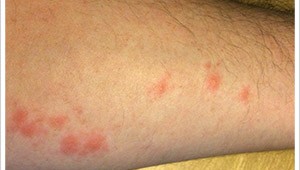 In 2011, the British Airways had to fumigate planes after ascertaining they were infested by bedbugs in a Los Angeles flight to London. This is was after a business woman travelling to London from India in a BA plane counted 90 bed bug bites by the time she was alighting the BA plane in London. The revelations resonated with news across the United States where bed-bugs have massively resurged with lots of outbreaks reported. Bed-bugs have already been confirmed as having invaded public schools across the United States, especially in New York where confirmed cases stood at 1,700 in just five months in 2011 and was on course to triple the 2010’s total bed-bug invasion cases of 1,019 in the Big Apple. United States Environmental Protection Agency had to indicate that, while the bites were only happening on hot spots, the pests were spreading across the nation in an alarming rate.
In 2011, the British Airways had to fumigate planes after ascertaining they were infested by bedbugs in a Los Angeles flight to London. This is was after a business woman travelling to London from India in a BA plane counted 90 bed bug bites by the time she was alighting the BA plane in London. The revelations resonated with news across the United States where bed-bugs have massively resurged with lots of outbreaks reported. Bed-bugs have already been confirmed as having invaded public schools across the United States, especially in New York where confirmed cases stood at 1,700 in just five months in 2011 and was on course to triple the 2010’s total bed-bug invasion cases of 1,019 in the Big Apple. United States Environmental Protection Agency had to indicate that, while the bites were only happening on hot spots, the pests were spreading across the nation in an alarming rate.
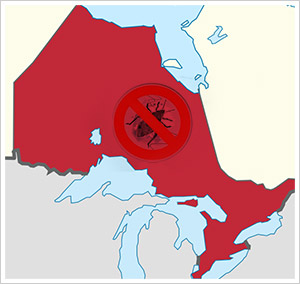 Canada is another country that has seen a massive surge in bed bug infestations over the last decade as well as emergence of a large number of pest control and bed bug exterminators in Toronto and a variety of other Canadian cities. Not only are residents of major Canadian cities like Toronto, Vancouver and Ottawa, increasingly reporting bed bug infestations, but also public institutions such as the Toronto Hospital in Etobicoke and educational institutions as well. In 2011, in Ontario alone, the government of Ontario was pledging $5 million to intensify the battle on annihilating bed bugs, due to the rise of bed bug infestations that had been unhindered for years. It is clear, in Ontario and Toronto specifically, that any bed bug infestation is unacceptable and a maddening reality. This is why there has been a recent increase in the number of professional bed bug exterminators as well as all kinds of do-it-yourself methods and products that attempt to get rid of these blood-sucking pests from Canadian homes.
Canada is another country that has seen a massive surge in bed bug infestations over the last decade as well as emergence of a large number of pest control and bed bug exterminators in Toronto and a variety of other Canadian cities. Not only are residents of major Canadian cities like Toronto, Vancouver and Ottawa, increasingly reporting bed bug infestations, but also public institutions such as the Toronto Hospital in Etobicoke and educational institutions as well. In 2011, in Ontario alone, the government of Ontario was pledging $5 million to intensify the battle on annihilating bed bugs, due to the rise of bed bug infestations that had been unhindered for years. It is clear, in Ontario and Toronto specifically, that any bed bug infestation is unacceptable and a maddening reality. This is why there has been a recent increase in the number of professional bed bug exterminators as well as all kinds of do-it-yourself methods and products that attempt to get rid of these blood-sucking pests from Canadian homes.
Below we talk about the major DIY methods that most Canadians attempt to use to get rid of bed bugs, and in most cases without success.
Bug bombs
There are so many bug bombs available that once used fill a whole room with some kind of a pesticide mist and it is the first thing that comes to mind when bed bugs are discovered. These aerosol cans usually full of pyrethrins do not have any great effect on bed bugs except stir them up and compel them to move to other new hiding places, which means they will move to other new locations. At the same time, it is clear lots of bed bugs have been the victims of shoddy DIY extermination jobs by homeowners, tenants and landlords in Canada and as a result have developed resistant to bug bombs’ main ingredient, pyrethrins.
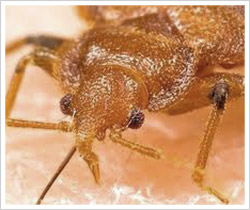 As indicated, Cimex lectularius or bed bugs have resurged in the 21st century even in the most unlikely places. There had been a 3 decade bed bug vacation in North America and were considered to have been completely removed courtesy of mass treatments carried out through the use of older kinds of insecticides such as Lindane, Clordane and DDT. However, the recent increase in bed bug numbers across the world is due to very limited public awareness of the pest, successful treatment of other insect pests that has not impacted bedbugs and an increase in world travel. Apart from airlines, hotels and homes, bed bugs are also at home in various public areas, libraries, office buildings, retail facilities and schools.
As indicated, Cimex lectularius or bed bugs have resurged in the 21st century even in the most unlikely places. There had been a 3 decade bed bug vacation in North America and were considered to have been completely removed courtesy of mass treatments carried out through the use of older kinds of insecticides such as Lindane, Clordane and DDT. However, the recent increase in bed bug numbers across the world is due to very limited public awareness of the pest, successful treatment of other insect pests that has not impacted bedbugs and an increase in world travel. Apart from airlines, hotels and homes, bed bugs are also at home in various public areas, libraries, office buildings, retail facilities and schools.
Why bed bugs need to be exterminated
As parasites, bed bugs literary feed on human blood. They use it as a meal required for their reproduction and growth. In fact, they are unable to distinguish between clean and dirty homes and anyone is vulnerable to their infestations. It is also worth noticing bed bugs also feed on such pets as cats and dogs, including other animals as long as they have blood.
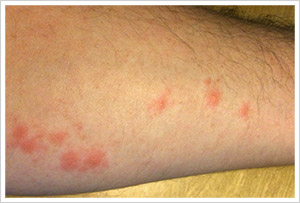 Bed bugs live in areas close to people as we are their primary food source. This includes areas where people sit often and for a long time, rest or sleep. Due to hunger, bed bugs leave these hiding places and move about searching for exposed skin to feed on. In most cases, the neck and head are usually bitten although they also bite bare legs, hands and arms. As they search for areas to feed, bed bugs are able to move quite fast even though they cannot fly. After finding a proper site it takes them between two to five minutes to be full before running fast from the site into their hiding places. According to one of the pest control experts at Pestend Pest Control in Toronto www.pestend.ca, “bed bugs are experts at hiding in places that you least expect such as behind and inside of wall decorations, inside electricity outlets, behind baseboards, under night tables and many other furniture and places within homes. Sometimes K-9 inspection is mandatory because bed bugs are so good at hiding that even experienced professionals cannot detect them.”
Bed bugs live in areas close to people as we are their primary food source. This includes areas where people sit often and for a long time, rest or sleep. Due to hunger, bed bugs leave these hiding places and move about searching for exposed skin to feed on. In most cases, the neck and head are usually bitten although they also bite bare legs, hands and arms. As they search for areas to feed, bed bugs are able to move quite fast even though they cannot fly. After finding a proper site it takes them between two to five minutes to be full before running fast from the site into their hiding places. According to one of the pest control experts at Pestend Pest Control in Toronto www.pestend.ca, “bed bugs are experts at hiding in places that you least expect such as behind and inside of wall decorations, inside electricity outlets, behind baseboards, under night tables and many other furniture and places within homes. Sometimes K-9 inspection is mandatory because bed bugs are so good at hiding that even experienced professionals cannot detect them.”
Apart from their stealthy movement to unsuspecting victims, it is also possible to find their bites going unnoticed. Sometimes the bites are mistaken with those of other parasites and pests. Also, it is worth noting not everyone is sensitive to bites from bed bugs. While an individual might have rashes breaking out across various part of the body that have been bitten, others hardly display any symptom. In case of a reaction, the result of bed bug bites can appear mild or just a red spot to hives or rashes in case of a severe case. These reactions of feeding by bed bugs can be mistaken for a number of complications such as sensitization to irritants, soaps and detergents, insect bites, mosquitoes and fleas. It is also vital to indicate bed bugs have not been discovered to transmit or cause diseases on their victims.
Bed Bug Life Cycle
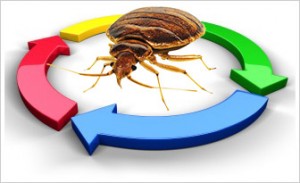 It has been documented that bed bugs are usually in hiding at daytime and very active during the night. Once they have mated, the female bed bug lays oval white eggs about a sixteenth of an inch in length within crevices or cracks. A single bed bug is capable of laying between 200 and 250 eggs in its lifetime. It takes six to ten days for the eggs to hatch as the newly released nymphs run out for their first blood meal. If you want to see what bed bugs look at different stages of the bed bug life cycle, check out this page – What do bed bugs look like.
It has been documented that bed bugs are usually in hiding at daytime and very active during the night. Once they have mated, the female bed bug lays oval white eggs about a sixteenth of an inch in length within crevices or cracks. A single bed bug is capable of laying between 200 and 250 eggs in its lifetime. It takes six to ten days for the eggs to hatch as the newly released nymphs run out for their first blood meal. If you want to see what bed bugs look at different stages of the bed bug life cycle, check out this page – What do bed bugs look like.
It is common for immature nymphs to encourage growth through molting about five times where the outer skeleton is shed so that they can grow prior to reaching adulthood. For each molt, the bed bug nymphs need to feed as much as possible and they can also feed lots of times in just a single day. Immature or growing bed bugs could live for a couple of months without any meal while adult bed bugs are able to live without a blood meal for a long time, usually about 12 months. Normally, a mature bed bug’s lifespan is between 10 and 11 months.
Detecting bed bug infestations
 One of the pointers to an infestation is the fact that bed bugs usually cluster at the same place in harbourage areas favourable to them. Nevertheless, it is not surprising to find bed bugs that live on their own far from a cluster of other bugs. To know if there is an infestation, the best place to look for them is around the places you rest or sleep. Around the bedroom look for infestation around box springs, mattresses buttons, folds, tufts, bed frames and mattresses themselves including underneath carpet edges, wood floor cracks, pictures ad clocks, behind paint or wall paper, chairs and desks among other furniture. For those who travel a lot, checking out the luggage is important by setting it down before entering the house.
One of the pointers to an infestation is the fact that bed bugs usually cluster at the same place in harbourage areas favourable to them. Nevertheless, it is not surprising to find bed bugs that live on their own far from a cluster of other bugs. To know if there is an infestation, the best place to look for them is around the places you rest or sleep. Around the bedroom look for infestation around box springs, mattresses buttons, folds, tufts, bed frames and mattresses themselves including underneath carpet edges, wood floor cracks, pictures ad clocks, behind paint or wall paper, chairs and desks among other furniture. For those who travel a lot, checking out the luggage is important by setting it down before entering the house.
It is also possible to detect bed bugs due to their unique rotting smell of raspberries. In cities such as New York there are dogs specialised in detecting bed bugs and are able to pinpoint a particular infestation and have an accuracy of between 10 percent and 83 percent. A number of pest control companies have been experimenting on other detection methods such as high gas speed chromatography.
Most of the infestation manifest in bedrooms but also appear in other areas of the house such as laundry areas, living rooms and the bathroom. It is common for bed bugs to excrete as they feed, resulting in a brownish, dark reddish or darker smears or spots on mattresses, pillowcases and bed sheets. The excretion is usually digested blood and a very characteristic stain.
It is worth remembering that since the insects are very small and flat from a sixteenth of an inch to a quarter of an inch in size, they capable of moving into some of the tightest cracks and corners. They can also be found below picture frames, behind wall plates and electrical outlets and between frames and glasses.
It is very important to attempt some thorough inspection but if doubting your ability to find any of the pests, contact a pest control company in your area. Once bed bugs have been found inspection has to stop immediately and control activity initiated. It is not wise to inspect alone since bed bugs have a way of moving far from a hiding area in case disturbed. Extra inspections need to be followed by control measures.
Bed bugs infestation control
By 2012, pesticides considered effective in ending the scourge of bed bugs were not available yet. However, the pesticides that have been found to effectively kill these pests historically include malathion, dichlorvos and pyrethroids.
To control bed bugs infestation at home, school, airplane, hotel or any other place the most recommended step is seeking the help of a service that deals with pest control. This is because bed bug control demands meticulous and detailed work from special equipment, disassembly and moving of furniture. Apart from sharp inspections that have to be carried out, non-chemical controls also need to be done, such as steam treatments, vacuuming and heat treatments. For a company that offers the complete assortment of bed bug extermination services check out www.bedbugexterminatorpro.ca in Toronto and read about their available bed bug extermination options to find out more about the available services.
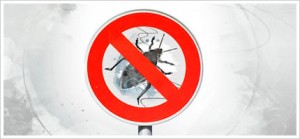 Insecticides used are usually commercial products that require some measure of training and special equipment. Essentially, available insecticides in most products over the counter as well as methods that many people use are effective in controlling roaches and other parasites but not bed bugs. For a list of pesticides and insecticides and more details visit the Healthy Canadians website by the Government of Canada.
Insecticides used are usually commercial products that require some measure of training and special equipment. Essentially, available insecticides in most products over the counter as well as methods that many people use are effective in controlling roaches and other parasites but not bed bugs. For a list of pesticides and insecticides and more details visit the Healthy Canadians website by the Government of Canada.
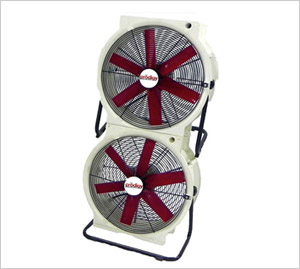 Heat treatment is very important in bed bugs control. Through specialized equipment, temperatures are raised to about 75°C and maintained for about 70 minutes. If this method is applied properly, bed bugs in all stages are destroyed. Even so, it might be a highly effective way of dealing with bed bug infestation but even heat treatment is not an assurance that bed bugs cannot be brought again into a place and re-infesting the same area again.
Heat treatment is very important in bed bugs control. Through specialized equipment, temperatures are raised to about 75°C and maintained for about 70 minutes. If this method is applied properly, bed bugs in all stages are destroyed. Even so, it might be a highly effective way of dealing with bed bug infestation but even heat treatment is not an assurance that bed bugs cannot be brought again into a place and re-infesting the same area again.
According to the Bed Bugs Info fact sheet the only accepted and most effective way of dealing with bed bug infestations combines a number of products and techniques that do not pose a lot of risk to the environment or human health in what is known as IPM (Integrated Pest Management). IPM is only effectively put into practice by professional licensed bed bug exterminator companies who are the only ones allowed to apply any pesticide to deal with bed bugs. The fact sheet also agrees bug bombs and foggers are utterly ineffective against the pests, meaning virtually every DIY bed bug removal method by a landlord, tenant or homeowner will be unsuccessful especially because there is an agreement that any control of bed bugs takes a couple of treatments.
Sources
How to Manage Pests-Pests of Homes, Structures, People, and Pets http://www.ipm.ucdavis.edu/PMG/PESTNOTES/pn7454.html
Romero A, Potter MF, Potter DA, Haynes KF. Insecticide resistance in the bed bug: a factor in the pest’s sudden resurgence? J Med Entomol. 2007;44(2):175-178 http://dx.doi.org/10.1603/0022-2585(2007)44%5B175:IRITBB%5D2.0.CO;2
Ter Poorten MC, Prose NS. The return of the common bed bug. Pediatr Dermatol. 2005;22(3):183-187 http://dx.doi.org/10.1111/pde.2005.22.issue-3
Ray Massey, 26 February 2011, Bed-bug Airways: BA grounds two jumbos after woman tells how flights left her covered in bites, http://www.dailymail.co.uk/news/article-1360492/Bed-bug-Airways-BA-grounds-jumbo-jets-businesswoman-tells-long-haul-flights-
K, Stephen A., H, Jeff, Prevention and control of bed bugs in residences. http://www.extension.umn.edu/garden/insects/find/bed-bugs-in-residences/
R Klaus and SJ, Michael T., 2006, Biology of the Bed Bugs (Cimicidae), Annual Review of Entomology, http://www.annualreviews.org/doi/pdf/10.1146/annurev.ento.52.040306.133913
